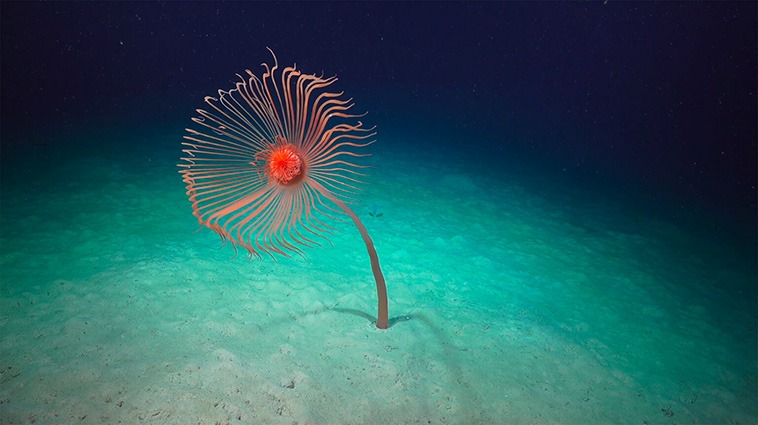ANIMALS
Lonely Orangutan Mom Sees Zookeeper Breastfeeding, Triggers Motherhood Instincts Unexpectedly
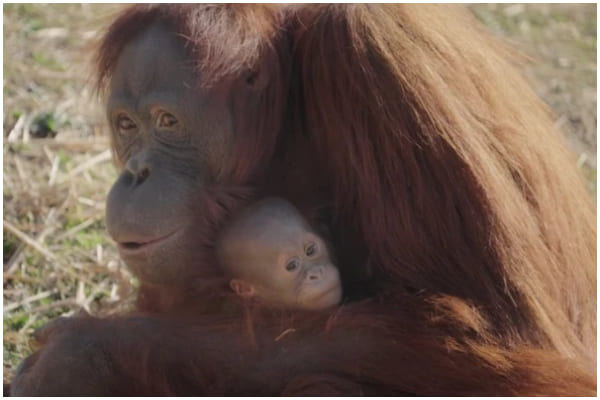
Not everyone is automatically good at being a mom. Even if someone doesn’t have a built-in motherly instinct, they can still be a great parent. For people, there are lots of helpful guides for new moms.
But in the animal world, those who aren’t born with this instinct have to learn how to take care of their little ones. Keep reading to see an example of this!
Zoe didn’t feel like a mom right away.
 Image source: Metro Richmond Zoo
Image source: Metro Richmond Zoo
At the zoo, when Zoe, an orangutan, struggled with being a mom, zookeepers saw that they needed to step in.
Since Zoe had trouble nursing her first baby, the staff wanted to make sure things went better with her second one. They got in touch with Whitlee Turner, a zookeeper who is also a new mom, for help. Without any hesitation, Whitlee agreed to assist Zoe in figuring out how to breastfeed.
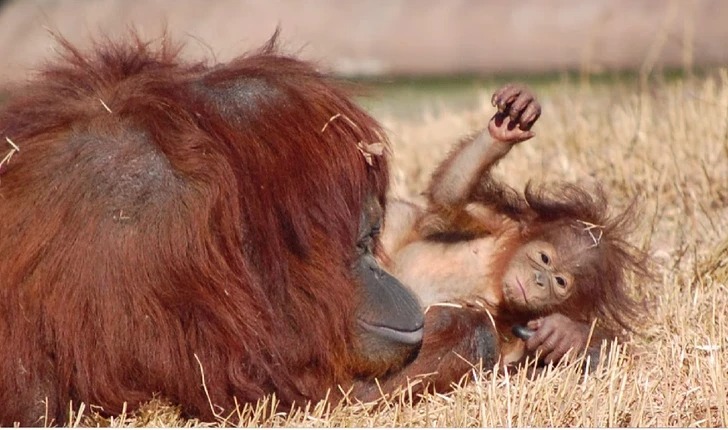 Image source: Metro Richmond Zoo
Image source: Metro Richmond Zoo
Whitlee was happy to help out. In this unique teamwork, Whitlee, along with her baby Caleb, joined Zoe in the orangutan indoor area. The goal was for the experienced mom to guide Zoe in taking care of her own newborn.
Zoe never had the chance to learn how to be a mom because she lost her own mother when she was just 9 months old. Whitlee was determined to lend a hand and share her motherhood know-how with the orangutan.
So, Zoe began picking up lessons from a mom.
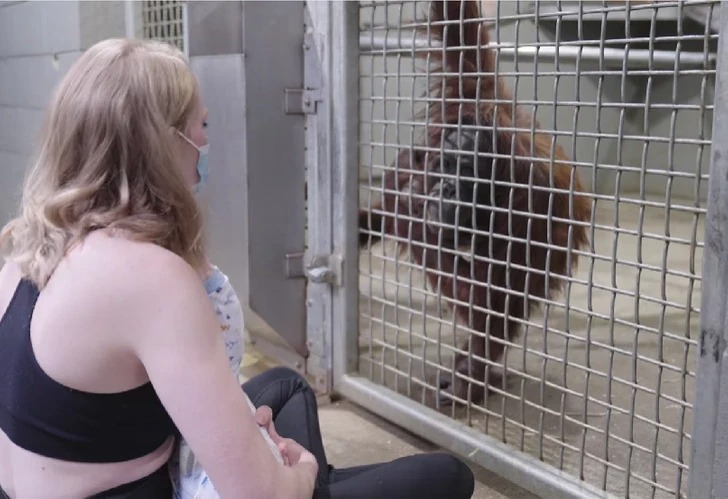 Image source: Metro Richmond Zoo
Image source: Metro Richmond Zoo
Whitlee, in her breastfeeding bra, showed Zoe how to take care of a newborn. Zoe got to watch and learn about all the careful steps involved in looking after a baby.
Whitlee said, “I just had my breastfeeding bra and was able to show her everything with zero modesty.”
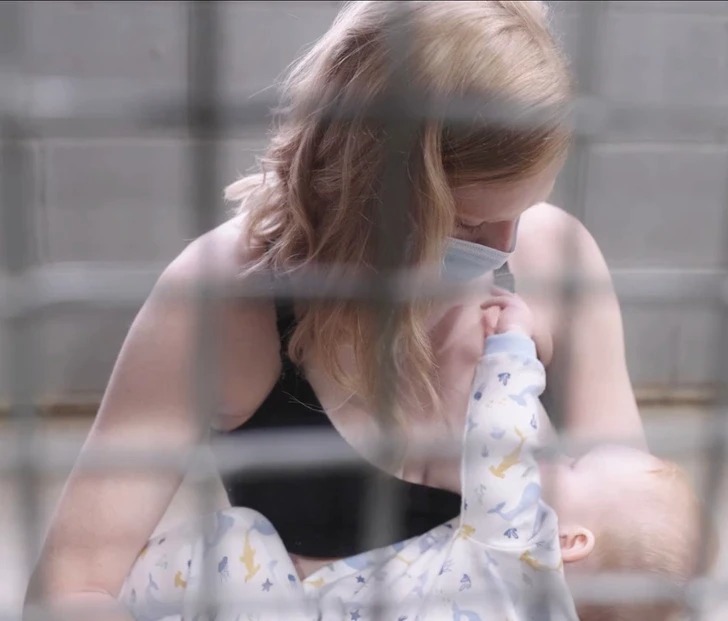 Image source: Metro Richmond Zoo
Image source: Metro Richmond Zoo
“I wanted her to be able to see the whole process because orangutans don’t wear shirts. I wanted her to see my breasts, see Caleb, and be able to see him rooting and hungry. She could see where the baby was supposed to be held,” she added.
While Zoe was first curious and watched the demonstration with interest, it took another day for her to successfully breastfeed her baby.
Hard work and dedication always lead to success.
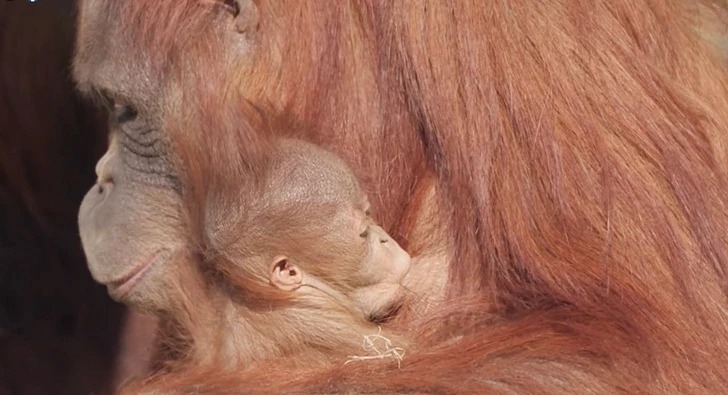 Image source: Metro Richmond Zoo
Image source: Metro Richmond Zoo
To help Zoe become a better mom, the zookeepers at the Indianapolis Zoo went the extra mile. They put a TV in her space and played videos over and over showing orangutans having babies and taking care of their little ones. This creative idea was meant to boost Zoe’s learning, letting her see how other orangutan moms handle motherhood.
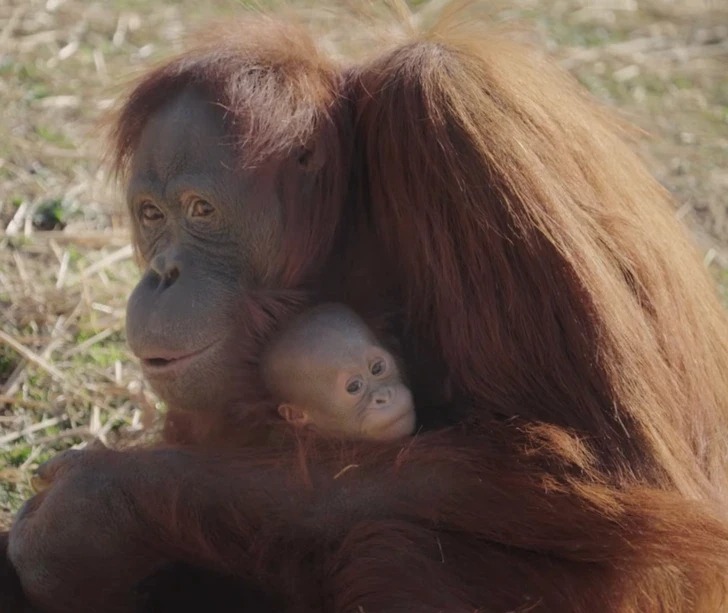 Image source: Metro Richmond Zoo
Image source: Metro Richmond Zoo
The touching tale of Whitlee and Zoe’s special connection reminds us how important it is to show kindness and take good care of animals in zoos.
Zookeepers’ commitment, along with creative approaches, can overcome unexpected hurdles and help animals develop their natural instincts.
Zoe successfully breastfeeding her baby not only shows the strength of empathy and understanding but also highlights the deep connections that can form between different types of animals.
It’s a heartwarming example of shared experiences that go beyond our differences, teaching us valuable lessons from one another.
ANIMALS
Amazing Video of Unseen Ocean Creatures in the Ningaloo Canyons

The Schmidt Ocean Institute recently explored the Ningaloo Canyons on the western coast of Australia using a robotic underwater vehicle called the ROV Sebastian. Check out the amazing video of what they discovered in the deep parts of the Indian Ocean.
More info: Youtube
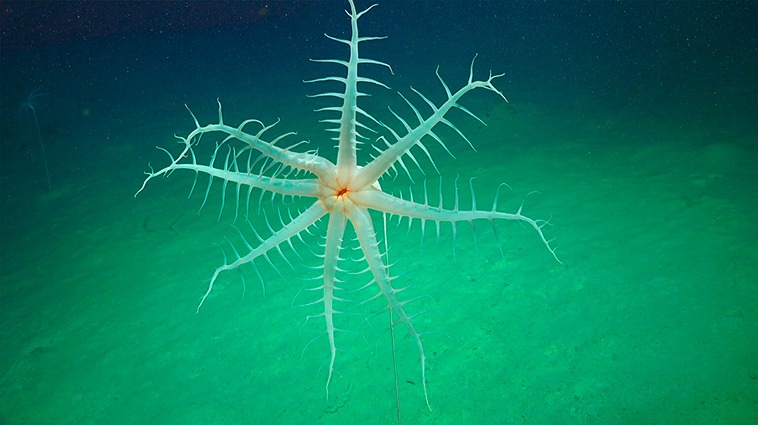
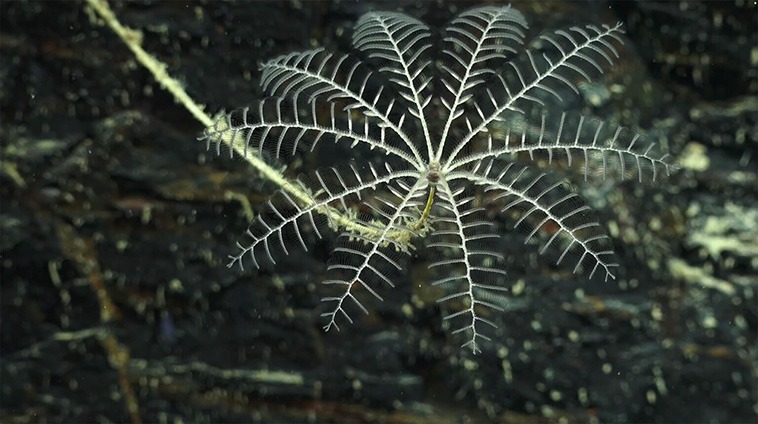


ANIMALS
These Pics Are Art and the Artists Are Insects

Flying insects move so quickly that they are hard to follow, but new technology and some smart ideas have helped Spanish photographer Xavi Bou do just that. After spending 10 years focusing on birds in flight for his Ornithographies project, he turned his attention to insects.
For Entomographies, he uses high-speed video footage taken by Adrian Smith, an insect expert at North Carolina State University, to study and record how insects move. Bou then picks multiple frames and combines them into single images that show the fast movements of one or more insects through space and time.
With Smith’s help, Bou has captured the aerial tricks of wasps, the jumps of leafhoppers, and the fluttering of butterflies in amazing detail. He hopes that by doing this, he can make people more aware of the decline in important insect populations around the world.
1. Zebra longwing
This butterfly, which is common in many areas of the Americas, really fits its name. It can fly very high with just a few flaps of its large wings.
 Image source: nationalgeographic
Image source: nationalgeographic
2. Two-lined spittlebug
This insect, which comes from the eastern United States, is often seen as a pest because it likes to eat grass. Its springy back legs can make it jump into the air like a rocket.
 Image source: nationalgeographic
Image source: nationalgeographic
3. Yellow-collared scape moth
Unlike most moths, this North American species flies during the day. Its shiny blue-black wings sparkle in the sunlight.
 Image source: nationalgeographic
Image source: nationalgeographic
4. Ailanthus webworm moths
These tropical moths have spread farther north in the U.S. Because of their larval host, the invasive tree of heaven, they are now one of the most common backyard moths in the country.
 Image source: nationalgeographic
Image source: nationalgeographic
5. Common stonefly
Mostly found in eastern North America, this insect starts its life as an underwater nymph in forested streams or rivers. Then it leaves the water, sheds its skin, and becomes an adult with wings.
 Image source: nationalgeographic
Image source: nationalgeographic
6. Green lacewings
Eighty-seven species of this insect have been found in the U.S. and Canada. Since they eat a lot of unwanted plant pests like aphids and mites, they are often used to naturally control these pests.
 Image source: nationalgeographic
Image source: nationalgeographic
7. Grapevine beetle
This insect, fittingly named, eats the leaves and fruit of grapevines, both wild and farmed, but it doesn’t do much damage to the plants. As a type of scarab beetle, it often flies in a curved path.
 Image source: nationalgeographic
Image source: nationalgeographic
8. Oak treehopper and green treehopper
Treehoppers are known for their uniquely shaped pronotum, the part behind their head, which often looks like plant parts to hide from predators. They can jump well thanks to special muscles.
 Image source: nationalgeographic
Image source: nationalgeographic
9. Banded orange
This brightly colored butterfly can be found from Mexico to Brazil. Before mating season, male butterflies look for mineral salts, sometimes even drinking salty fluids from the skin, eyes, and nostrils of other animals.
 Image source: nationalgeographic
Image source: nationalgeographic
10. Sapho longwing
Longwings can live for 6 to 7 months, longer than most butterflies. This type, found from Mexico to Ecuador, has shiny blue wings, which is why it’s also called the Sapphire longwing.
 Image source: nationalgeographic
Image source: nationalgeographic
ANIMALS
Eagle and Fox in an Epic Midair Battle Over a Rabbit, Were Captured by a Photographer

Wildlife photography often depends on the perfect combination of good timing and the right place.
That’s exactly what happened when Kevin Ebi, an experienced wildlife photographer, captured an incredible battle between a bald eagle and a red fox, both competing for a rabbit meal.
In a detailed blog post, Ebi shares the fascinating series of events that unfolded while he was photographing foxes in San Juan Island National Historical Park, located in Washington state.
Ebi noticed a lively group of eight fox kits as they began their hunting lessons. Suddenly, they spotted a rabbit, and a thrilling chase ensued. Eventually, one of the foxes emerged as the winner, proudly carrying the rabbit across the field.
 Image source: Kevin Ebi
Image source: Kevin Ebi
Ebi shares what happened at that moment: “As I followed the fox with my camera, a sudden bald eagle cry caught my attention. It was swiftly approaching, clearly aiming for the rabbit. I quickly focused on the fox, anticipating a quick turnover of events.”
To Ebi’s astonishment, instead of a quick surrender, the situation turned into a intense fight in the air.
The eagle used its power to lift the fox and rabbit high up in the sky. Even while airborne, the fox attempted to break free by swinging back and forth.
 Image source: Kevin Ebi
Image source: Kevin Ebi
 Image source: Kevin Ebi
Image source: Kevin Ebi
 Image source: Kevin Ebi
Image source: Kevin Ebi
In the end, the eagle moved the rabbit to its other claw, causing the fox to let go. The intense battle came to an end in less than 10 seconds.
 Image source: Kevin Ebi
Image source: Kevin Ebi
For those worried about the fox’s well-being after the fight, Ebi reassures that it was not injured. The fox swiftly bounced back from the encounter and resumed its playful behavior with the other young foxes, showing no visible wounds from the aerial clash.
 Image source: Kevin Ebi
Image source: Kevin Ebi
 Image source: Kevin Ebi
Image source: Kevin Ebi
 Image source: Kevin Ebi
Image source: Kevin Ebi
 Image source: Kevin Ebi
Image source: Kevin Ebi
-

 GARDEN12 tháng ago
GARDEN12 tháng ago4 Easiest Ways to Get Free Plants
-

 GARDEN9 tháng ago
GARDEN9 tháng ago15 Houseplants That Grow Well in Vases with Water
-

 FUNNY12 tháng ago
FUNNY12 tháng ago30 Funny and Perplexing Photos That Make You Laugh All Day
-

 FUNNY12 tháng ago
FUNNY12 tháng ago30 Weirdest Things That People Came Across On The Subway
-

 ANIMALS12 tháng ago
ANIMALS12 tháng agoBritish Angler Caught Huge 67-Pound Goldfish in the World
-

 DIY & CRAFT11 tháng ago
DIY & CRAFT11 tháng ago19 Easy and Creative DIY Ideas to Enhance Front Yard
-

 FUNNY12 tháng ago
FUNNY12 tháng ago22 Design Fails That Will Make You Laugh Out Loud
-

 GARDEN10 tháng ago
GARDEN10 tháng ago30 Shimmering Side Yard Landscape Ideas

